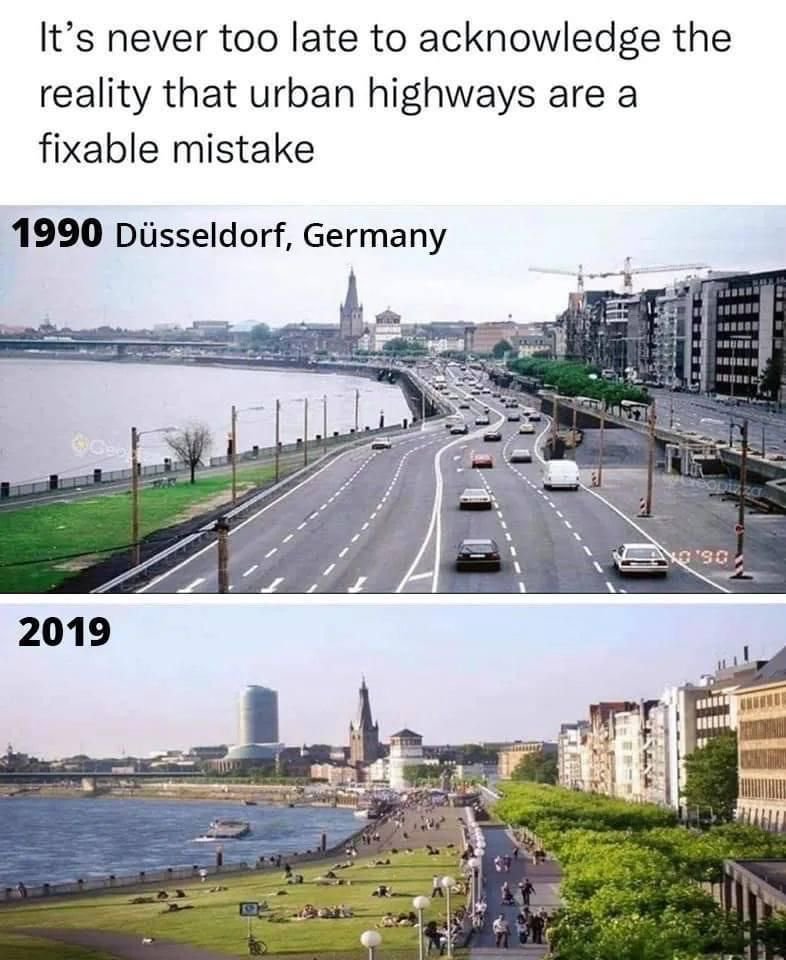The other issue is that, to put it simply, cars are never just cars. They’re interwoven into our culture and consumption as symbols of affluence, independence, and success, and the aspiration to achieve those things in future. “A man who, beyond the age of 26, finds himself on a bus can count himself a failure,” the British prime minister Margaret Thatcher reportedly once said. “That’s how we got in this mess in the first place, though,” says Crawford. “Everybody saw that the rich people were driving cars, and they wanted to too.”
That divide goes some way to explaining why the opposition to car-reduction schemes is often so extreme and can devolve into a “culture war”—which is what Holland has found in her experience with LTNs. But that struggle also outlines an important fact about car-free urban areas—that once cities make the decision to reduce or remove cars, they rarely go back. No one I spoke to for this piece could name a recent sizable pedestrianization or traffic-reduction scheme that had been reversed once it had been given time to have an effect.
Many of the cities that pioneered reducing car use—like Copenhagen in the 1970s—are rated today as some of the best places to live in the world. Even with London’s experimental and often unpopular LTN scheme, 100 of the 130 low-traffic areas created have been kept in place, Aldred says.
“Generally speaking, if a sensible program is adopted to really reduce or eliminate car usage in a central urban area, it seems to stick,” says Crawford. “If you go back a year or two later, people will just say: well, this is the best thing we ever did.”





:format(webp)/https://www.thestar.com/content/dam/thestar/news/gta/2022/12/20/integrity-commissioner-finds-mayor-john-tory-didnt-break-conflict-rules-over-rogers-ties/john_tory.jpg)
